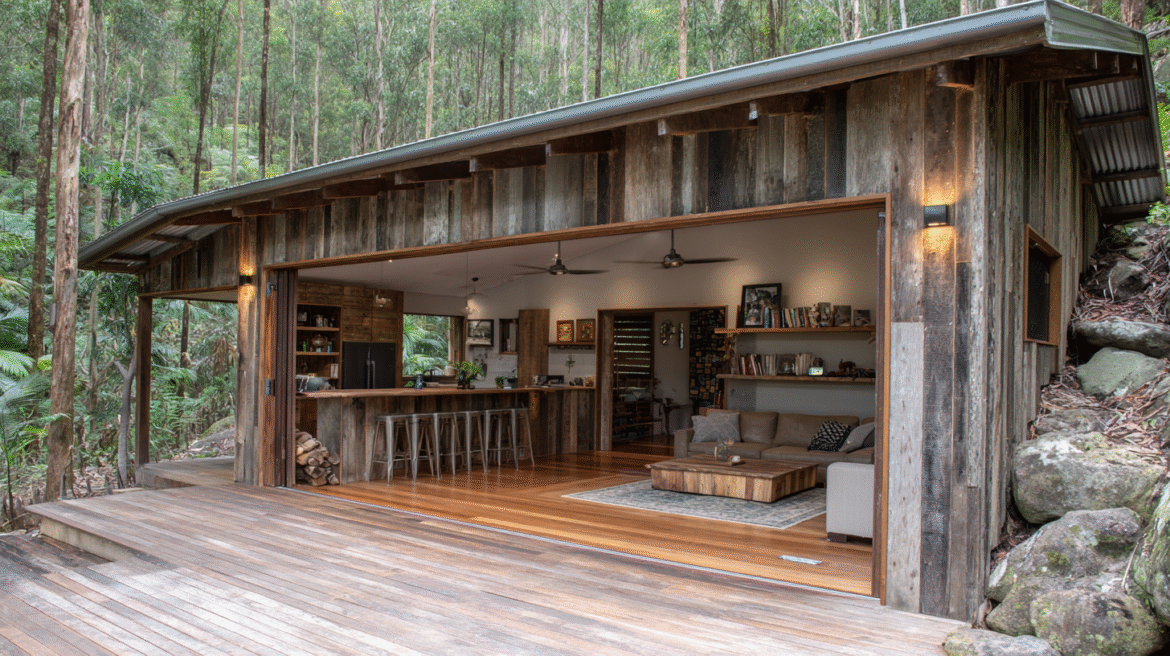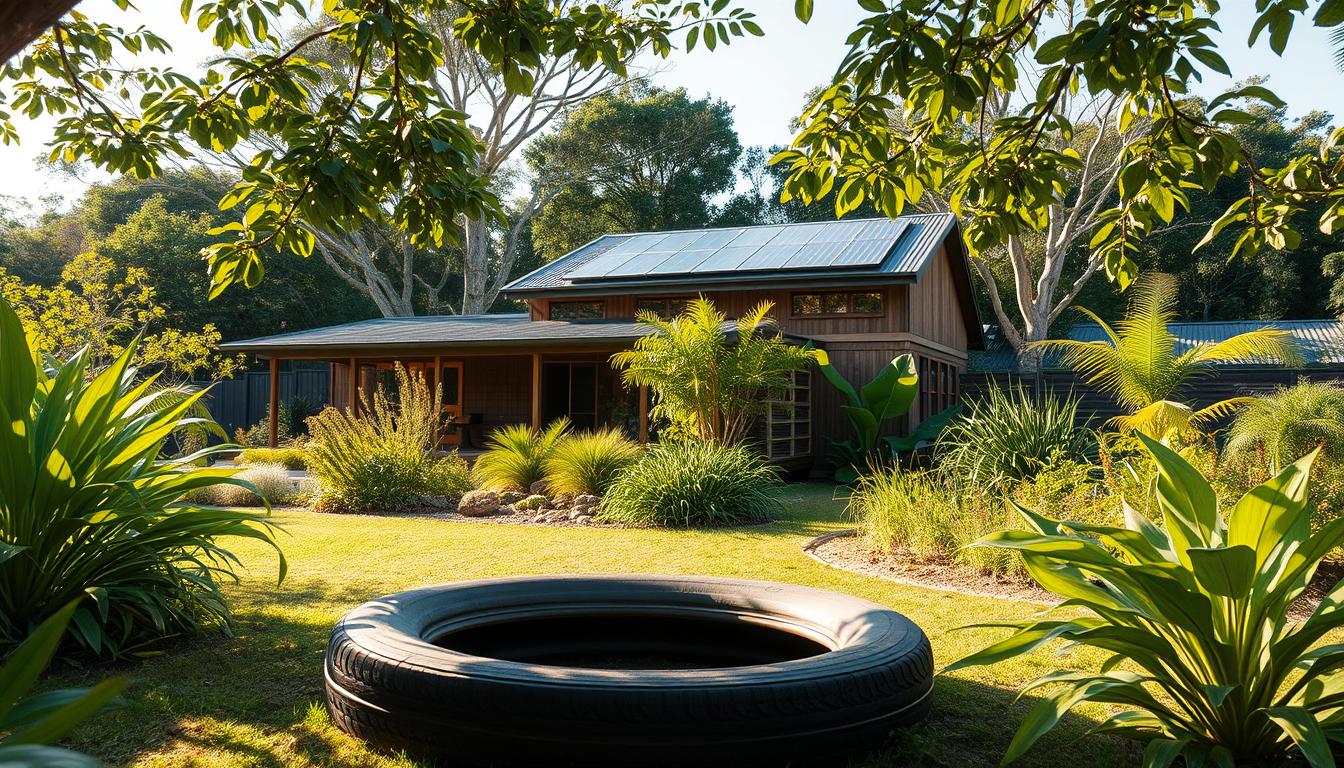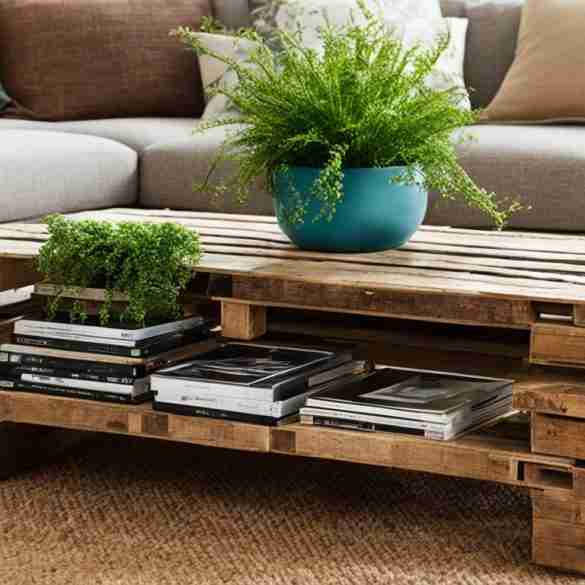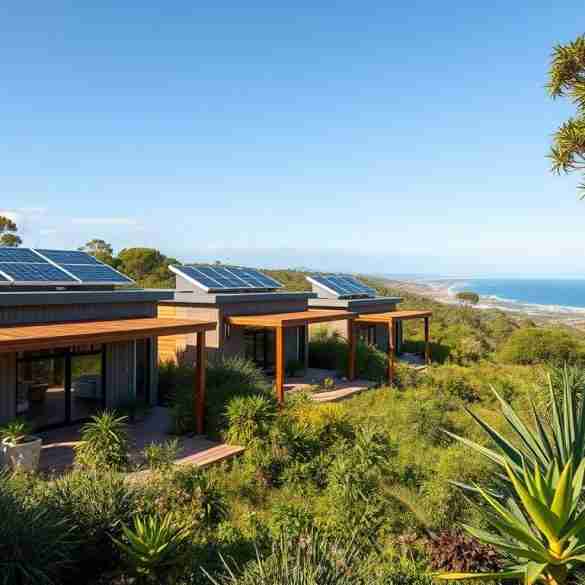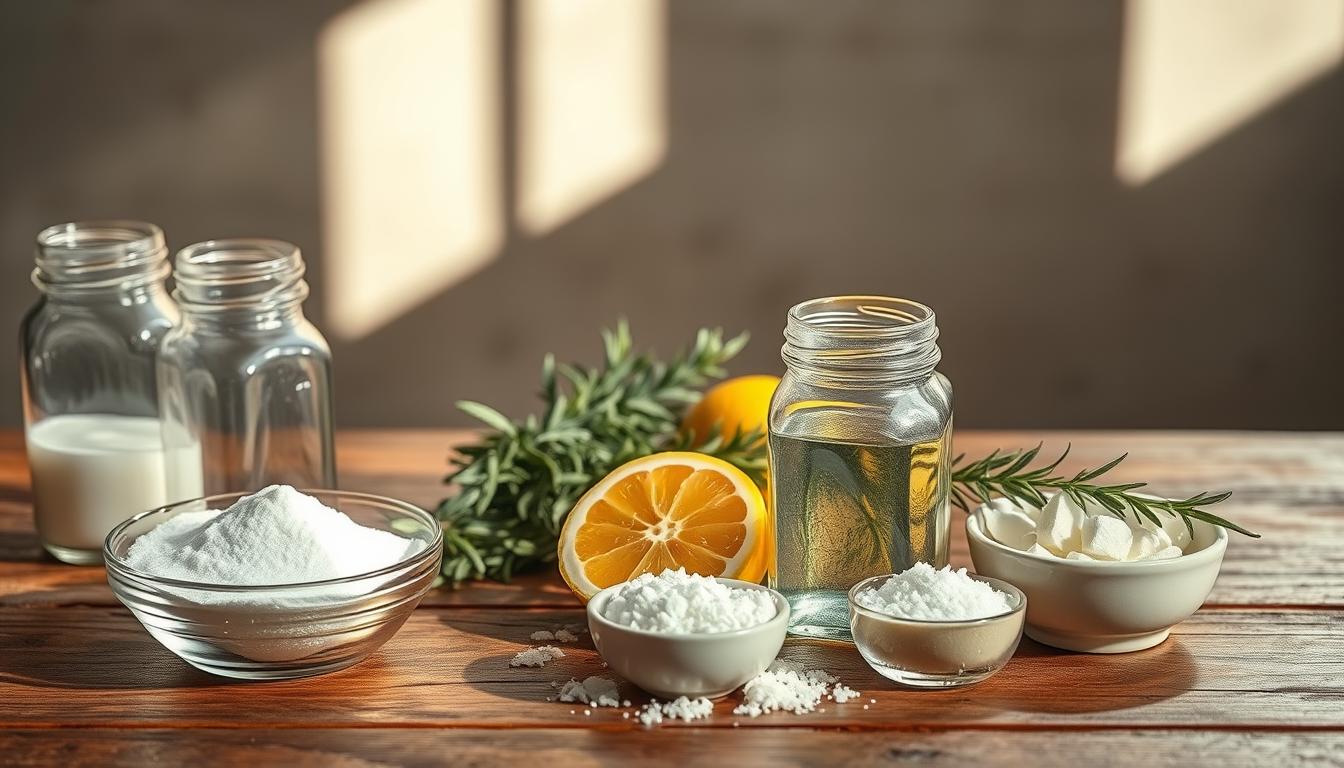From Bygone Buildings to Beautiful Homes: Your Ultimate List For Reclaimed Timber in Queensland
The allure of timber that has lived a previous life, bearing the marks of time and history, is captivating homeowners across Queensland. There’s a certain romance to incorporating materials that whisper tales of the past into the fabric of a modern home. Buy Quality Reclaimed Timber in Queensland, salvaged from old buildings, wharves and forgotten structures, more than just a building material it has character, unparalleled beauty, and a profound sense of sustainability.
As its appeal grows, understanding where to find these wooden treasures and how to best utilize them becomes paramount. This guide aims to be a comprehensive companion for Queenslanders looking to embark on their reclaimed timber journey, spotlighting local suppliers and offering insights into choosing timber that not only looks stunning but also thrives in the unique Queensland climate. By navigating this world of aged wood, homeowners can unearth hidden gems and make informed choices, transforming their living spaces into something truly special and enduring.
Listen to the Podcast as you look at the Information
Table of Contents
The Allure of Age: Why Reclaimed Timber is Stealing Hearts in Queensland Homes
The burgeoning interest in reclaimed timber within Queensland homes is a multifaceted phenomenon. It speaks to a desire for authenticity, a respect for craftsmanship of the past, and an increasing awareness of environmental responsibility. This section explores the compelling reasons behind reclaimed timber’s magnetic appeal.
The most immediate draw of reclaimed timber lies in its unique aesthetics and character. Each plank and beam tells a story, etched into its surface through visible signs of its former existence, such as nail holes, saw marks, weathering, and rich patinas. These imperfections are not flaws but rather badges of honor, imbuing spaces with an individuality and authenticity that newly milled lumber simply cannot replicate.
The “rustic and vintage aesthetics” it provides are increasingly sought after in contemporary interior design, offering a warm, tactile counterpoint to modern finishes. This appeal transcends mere visual appreciation; homeowners often find themselves drawn to the inherent history embedded in each piece.
These visible marks of a past life transform the wood from a mere building material into a tangible link to bygone eras. This connection to a story, a sense of heritage, fosters a deeper, more personal bond with one’s living space. In Queensland, this can take on special significance when the timber is sourced from local heritage structures, allowing residents to incorporate a piece of their community’s past into their homes.
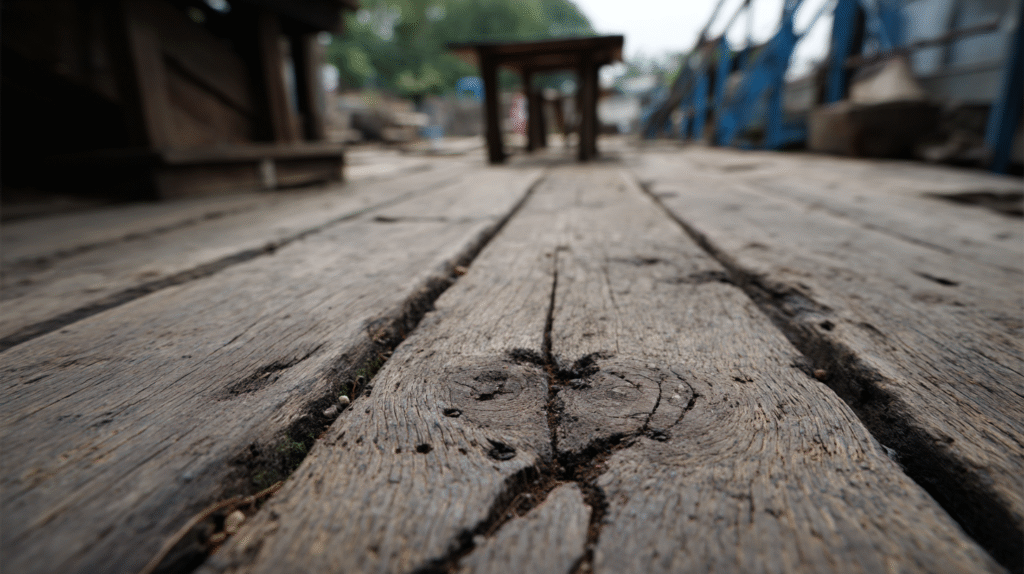
Beyond its visual charm, reclaimed timber often boasts superior quality and durability. Much of this wood was originally harvested from old-growth forests, meaning the trees were larger, older, and grew more slowly than many of their modern counterparts. This often resulted in timber that is denser, stronger, and more stable. Structures predating the post-World War building booms frequently utilized such high-quality wood. The inherent resilience of these aged timbers means they have already stood the test of time, often for a century or more, demonstrating their capacity to endure. This longevity is a key component of sustainable building practices, ensuring that items made from reclaimed wood can last for generations.2
Perhaps one of the most compelling arguments for reclaimed timber is its role as an environmental champion. Opting for salvaged wood significantly reduces the demand for virgin timber, thereby helping to conserve precious forest resources and protect biodiversity. The process of reclaiming and repurposing wood also typically consumes less energy and generates fewer carbon emissions compared to the harvesting, milling, and transportation of new lumber. By giving a second life to materials that might otherwise end up in landfills, reclaimed timber actively diverTilts waste and extends the carbon-storing capacity of the wood.

Furthermore, choosing reclaimed timber is a tangible way of supporting a circular economy. This approach to resource management emphasizes keeping materials in use for as long as possible, extracting maximum value and then recovering and regenerating products and materials at the end of their service life. Reclaimed timber perfectly embodies this principle, transforming potential waste into a valuable resource.
This conscious choice aligns with a broader shift towards more mindful consumption, reflecting a desire for items with longevity, inherent meaning, and sustainable origins, rather than fleeting, disposable trends. In this sense, incorporating reclaimed timber into a home is not merely a design decision but a lifestyle statement, resonating deeply with those who value quality, craftsmanship, and environmental stewardship.
Queensland’s Reclaimed Timber Trail: A Region-by-Region Directory
Queensland, with its rich history and diverse landscapes, offers a fascinating array of sources for reclaimed timber. From bustling urban centers to quiet regional towns, dedicated suppliers and hidden gems await discovery. However, the very nature of reclaimed timber means that availability can be inconsistent and stock can change rapidly. It’s always advisable to contact suppliers directly or visit their yards to see what treasures they currently hold. The pursuit itself can be part of the adventure, a treasure hunt for unique pieces that will bring unparalleled character to a home.
The term “reclaimed timber” encompasses a wide spectrum of products and suppliers. It can refer to raw, unprocessed materials salvaged directly from demolition sites, carefully curated and processed timber from specialized merchants, beautifully crafted finished goods made from reclaimed wood, and even innovative products designed to mimic the aesthetic of aged timber. This diversity reflects the varied needs of consumers, from the hands-on DIY enthusiast to the homeowner seeking a specific processed material or a ready-to-install statement piece. Understanding these distinctions is key to navigating the market effectively and finding the perfect match for any project. This variety also highlights the dynamic “ecosystem” of the reclaimed timber industry: demolition companies are often the primary source; specialized recyclers then process this timber, adding value through cleaning, de-nailing, and milling; and finally, craftspeople and furniture makers transform it into new creations.
To assist in this search, the following table provides a snapshot of reclaimed timber suppliers across Queensland:
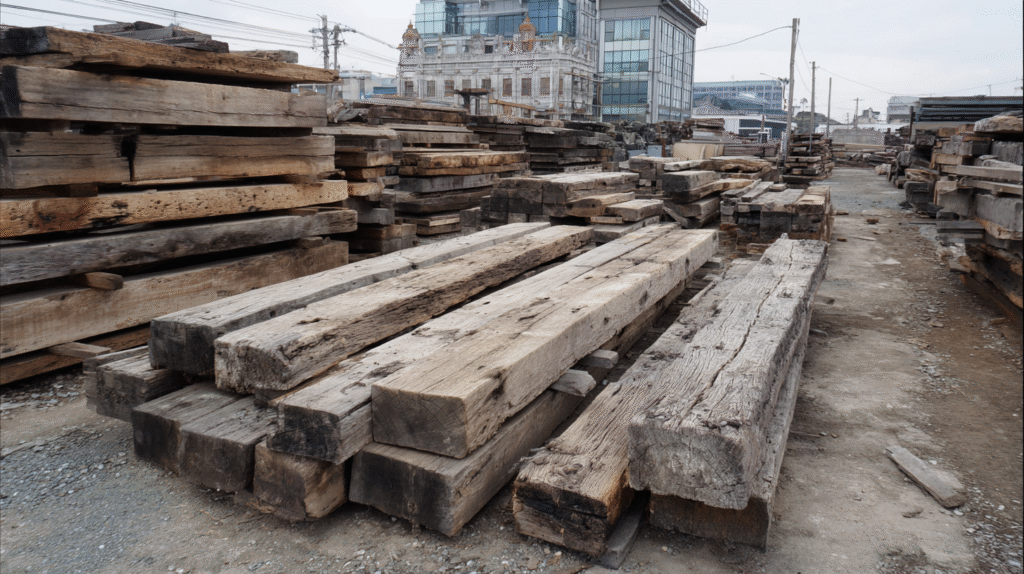
At-a-Glance: Queensland Reclaimed Timber Hotspots
| Region | Supplier Name | Primary Offering | Brief Note |
| Brisbane & Surrounds | The Big Timber Shed | Raw Timber, Salvaged Materials | Huge range for renovations, general building needs. |
| Tradeware Building Supplies | Recycled Timber Slabs, Dressing Services | Focus on Australian hardwoods, custom finishing available. | |
| Underwood Demolition Market | Demolition Salvage (Joists, Studs, Flooring) | Classic demo yard finds, hardwood and Hoop Pine flooring (subject to availability). | |
| Brisbane Furniture | Finished Furniture (from recycled timber) | “Plantation” collection made from recycled timber. | |
| Kennedy’s Timbers | Processed Reclaimed Timber (Cladding, Flooring, Decking, Beams) | Major supplier, wide range of species and applications, sources from old structures. | |
| Gold Coast & Tweed | Red Ned’s Salvage and Secondhand | Demolition Salvage, Building Materials | Large yard, wide variety of salvaged goods including kitchens, unique items. |
| Ocean Floors Gold Coast | Recycled Timber Flooring | Specializes in Australian hardwood flooring, custom finishes. | |
| Central Queensland | JAL Demolitions & Asbestos Removal | Demolition Salvage (Hardwood, Pine, Floorboards) | Local Rockhampton source for various salvaged building materials. |
| Mackay Truss and Timber | New Timber (potential for reclaimed offcuts) | Primarily new timber, but extensive range may offer some reclaimed options; advises on treating pine.14 | |
| Blue River Landscape Supplies | Recycled Timber Products (for landscaping) | Offers rustic timber for garden and landscaping projects. | |
| Bomitali Woodcraft | Custom Furniture & Upcycling (using reclaimed wood) | Mackay-based artisan, creates bespoke pieces from reclaimed and local timbers. | |
| Far North Queensland | Payless Timbers | Sustainably-Sourced Timber (potential for reclaimed) | Services Cairns & wider FNQ; focus on sustainable new timber, may have reclaimed options. |
| Dynamic Timbers | New Timber (potential for reclaimed offcuts) | Large FNQ timber yard, primarily new structural timber, services Ingham to Thursday Island. | |
| Townsville Demolitions | Demolition Salvage (Recycled Timber, Silky Oak, Red Cedar) | Key demolition yard for Townsville region, wide range of timber and building materials. | |
| Carpet One Townsville | Vinyl Plank Flooring (Salvaged Timber Look) | Offers flooring that replicates salvaged timber aesthetic, not actual reclaimed wood. | |
| WoodSolutions (Informational) | Timber Information | Provides data on local species like Johnstone River Hardwood, not a direct seller. |
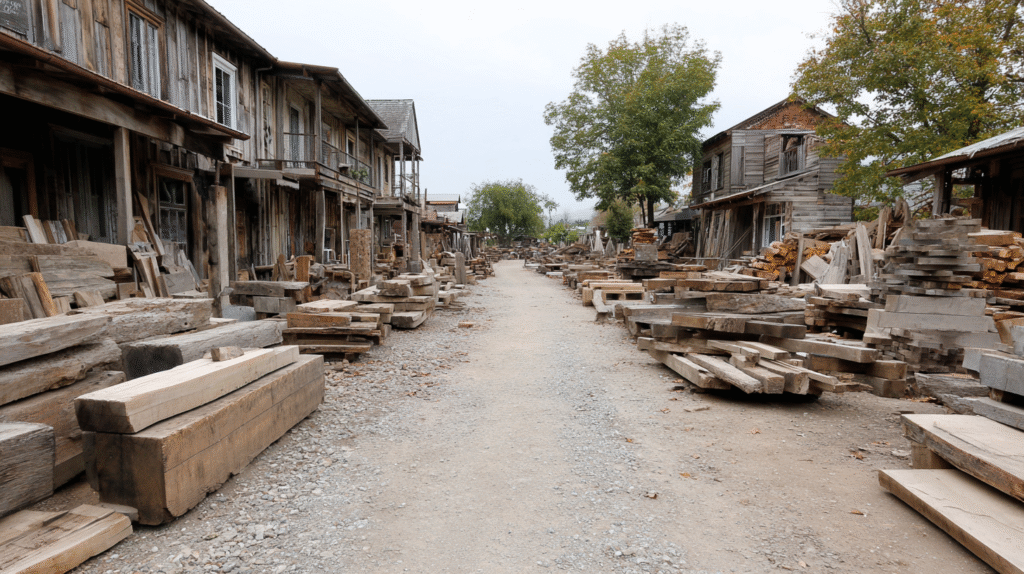
Brisbane & Surrounds: Urban Hubs for Historic Finds
The greater Brisbane area serves as a significant hub for those seeking reclaimed timber, with a variety of suppliers catering to different needs.
The Big Timber Shed, located in Narangba, positions itself as a specialist in recycled timber and building products, boasting a “HUGE range of timber, salvaged materials and renovation products” suitable for a wide array of projects.
Further east, Tradeware Building Supplies on New Cleveland Road offers an impressive selection of recycled timber slabs, primarily sourced from local Australian hardwoods. They provide value-added services such as dressing the timber to a smooth finish with their ‘Slab Master’ and can also stain or coat the wood to client specifications. Their inventory is dynamic, with mentions of expecting wider slabs from overseas, indicating a commitment to diverse offerings.
In Brisbane’s southern suburbs, the Underwood Demolition Market is a good source for traditional demolition yard finds, including hardwood joists and studs, as well as hardwood and, subject to availability, Hoop Pine flooring, alongside various other feature pieces.
For those seeking finished products rather than raw materials, Brisbane Furniture offers its “Plantation” collection, which is crafted from recycled timber.8 This is an important distinction for consumers looking for ready-made items.
A major and highly regarded player in the Brisbane region is Kennedy’s Timbers in Narangba. Operating since 1995, Kennedy’s supplies a comprehensive range of recycled and eco-sustainable timber for both commercial and residential projects. Their offerings include cladding, flooring, decking, feature posts and beams, stair components, benchtops, joinery timbers, and specialized custom orders. Their timber is meticulously sourced from a variety of structures such as wharfs, bridges, old warehouses, and even decommissioned power poles. Species commonly available include durable Australian hardwoods like Blackbutt, Grey Ironbark, Messmate, Spotted Gum, and Tallowwood.
Gold Coast & Tweed: Coastal Charm with Reclaimed Character
The coastal stretch from the Gold Coast down to Tweed Heads also presents excellent opportunities for sourcing reclaimed timber, perfect for adding character to beachside and hinterland homes.
Red Ned’s Salvage and Secondhand in Tweed Heads claims the title of the largest recycled and used building materials yard on the Gold Coast, sprawling over two acres. They operate as buyers and sellers of a vast array of items, from general building materials and timber to complete kitchens and unique, interesting salvaged pieces.
For specialized flooring needs, Ocean Floors Gold Coast focuses on recycled timber flooring crafted from iconic Australian hardwoods such as Ash, Blackbutt, Spotted Gum, and Tallowwood. They offer clients the choice between a rustic “sawtooth patina,” which leaves some of_the original rough-sawn surface, or a cleaner, more milled appearance that reveals the full grain and color of the timber.

Central Queensland: Rockhampton & Mackay’s Hidden Gems
Central Queensland also holds its share of reclaimed timber resources, often found through demolition services and specialized craftspeople.
In Rockhampton, JAL Demolitions & Asbestos Removal operates a recycled yard that provides a variety of salvaged building materials. Their stock includes hardwood, pine, floorboards, doors, and windows, acquired through their demolition activities.
Moving north to Mackay, Mackay Truss and Timber, while primarily a supplier of new timber frames, trusses, and a “massive range of timber & timber related products”, might be a point of inquiry for specific reclaimed needs or offcuts due to their large inventory. Their advice regarding the local climate is pertinent: “all pine used in our area be treated”, a crucial consideration for durability in Queensland.
Blue River Landscape Supplies in Mackay includes “recycled products, timber products” among their offerings for garden and landscaping projects, and they also process green waste, potentially yielding rustic timber suitable for outdoor applications.
For bespoke projects, Bomitali Woodcraft in Mackay is an excellent contact. They utilize “mainly locally and sustainably sourced” timbers and explicitly state they “love to work with reclaimed wood” or upcycle existing items. They highlight Mackay Cedar as a local timber they use, showcasing regional specificity.
While McKay Timber operates nationally with headquarters in Tasmania and a factory in Victoria, they do supply “Australia-Wide” and their extensive range includes various Australian timbers. Though not a direct Queensland-based yard, they could be a resource for larger or specific orders if local options are exhausted.
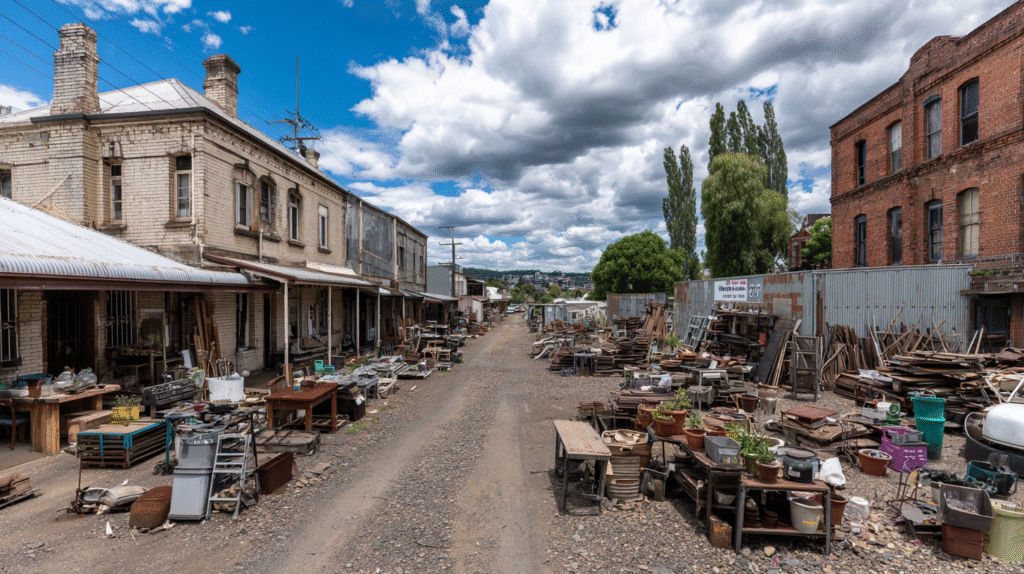
Far North Queensland: Tropical Treasures from Cairns to Townsville
The tropical expanse of Far North Queensland, from Cairns to Townsville and beyond, has its own unique sources and timber types.
Payless Timbers, based in Tolga and servicing the Tablelands, Cairns, Cassowary Coast, Port Douglas, and Cape York, offers a wide selection of “sustainably-sourced timber products,” including feature timber. Their materials are locally sourced and available in custom-cut options. While “sustainably-sourced” often implies new timber, their significant presence in FNQ and potential for offcuts or specific reclaimed batches make them a noteworthy contact. It is advisable for consumers to clarify if they stock actual reclaimed timber or focus solely on new sustainable options.
Dynamic Timbers, with locations in Innisfail, Tolga, and Cairns, is a large timber yard and roof truss manufacturer servicing the region from Ingham to Thursday Island. Their primary focus appears to be on new structural timbers, plywood, and mouldings. Similar to some Mackay suppliers, their extensive operations might occasionally yield reclaimed or offcut opportunities, though this is not their main business.
In Townsville, Townsville Demolitions in Garbutt is a key destination, stocking a “huge range of the highest-quality recycled building materials.” Their inventory explicitly includes recycled timber, Silky Oak, Red Cedar, and decking timber, among many other salvaged items.
It is important for consumers to be discerning; for instance, Carpet One Townsville lists a “Camaro Wood Collection – Salvaged Timber.” However, this product is a vinyl plank flooring designed to replicate the appearance of salvaged timber, not actual reclaimed wood. This is a valuable option for those seeking the aesthetic without the material itself, but clarity is essential.
For informational purposes, WoodSolutions, an online resource, mentions unique local timbers like Johnstone River Hardwood from the Cairns district. This is described as a hard-wearing timber excellent for flooring, though relatively rare. Such information can help identify local timber types that could potentially be found in reclaimed forms.
The hyperlocal and often variable nature of reclaimed timber supply means that what one yard has today might be different tomorrow. This “treasure hunt” aspect, while exciting for some, underscores the importance of direct communication with suppliers, visiting yards in person, and maintaining a degree of flexibility in project plans.
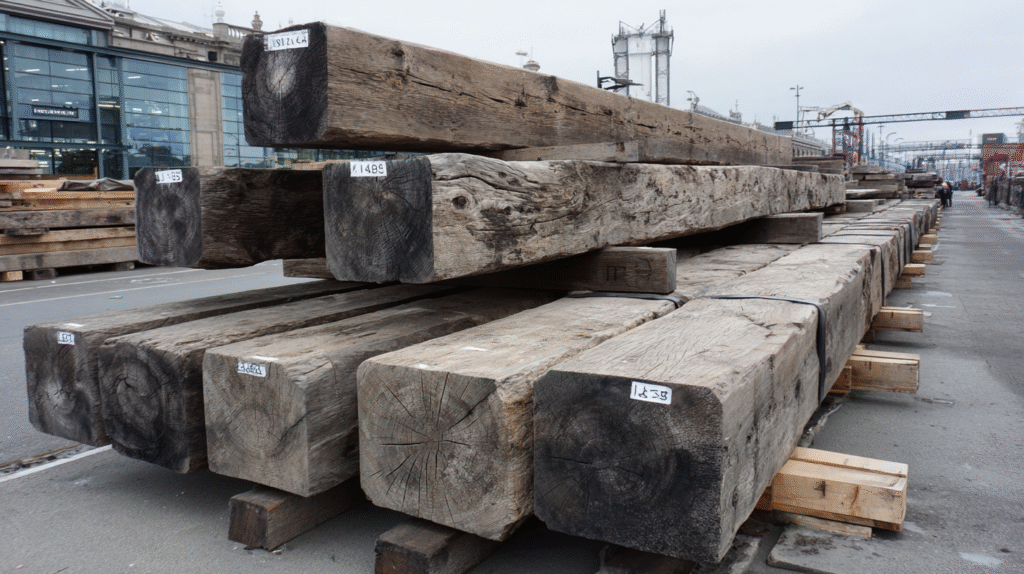
Built to Last: Choosing Reclaimed Timber for Queensland’s Unique Climate
Queensland’s climate, characterized by high humidity, intense sunshine, and a significant termite presence, demands careful consideration when selecting building materials, especially timber. Fortunately, many reclaimed timbers not only offer unique beauty but also possess inherent qualities that make them well-suited to these challenging conditions. Choosing wisely means ensuring a home is not only stylish but also resilient and long-lasting.
Battling the Bugs: Termite-Resistant Timber Choices
Termites pose a substantial threat to timber structures across Queensland. Therefore, selecting timber with natural resistance or ensuring appropriate treatment is crucial. The giant northern termite, for instance, is known to attack various timbers, with pine being particularly vulnerable if it’s not a resistant variety like cypress pine.
Several native Australian timbers are naturally resistant to termites. These include:
- Native cypress pines (Callitris species)
- Narrow-leaved red ironbark (Eucalyptus crebra)
- Broad-leaved red ironbark (Eucalyptus fibrosa)
- Turpentine (Syncarpia glomulifera)
- Satinay (Syncarpia hillii)
Opting for reclaimed versions of these species can provide a “double win”—the sought-after character of aged wood combined with innate protection against one of Queensland’s most destructive pests.
Weathering the Storm: Durable Hardwoods for Humidity and Sun
Beyond pests, the humidity and strong UV radiation in Queensland can take their toll on timber. Durability is therefore a key factor. Timbers are often classified by durability, with Class 1 timbers expected to last 40+ years above ground, and Class 2 timbers for 15-40 years. Several Australian hardwoods are renowned for their exceptional performance in harsh conditions:
- Ironbark (e.g., Grey Ironbark, Red Ironbark): Often rated Class 1 for durability, Ironbark is one of Australia’s toughest native hardwoods, capable of enduring the toughest conditions with a lifespan that can exceed 50 years with proper care. Kennedy’s Timbers, for example, supplies Grey Ironbark, noted for its immense strength and natural durability.
- Blackbutt: Typically a Class 1 or Class 2 durability timber, Blackbutt is strong, reliable, and often sustainably sourced. It’s a popular choice in Queensland for its performance and attractive appearance. Suppliers like Kennedy’s Timbers and Ocean Floors Gold Coast (for recycled flooring) feature this species.
- Spotted Gum: This hardwood is known for its fire-resistant properties (an important consideration in some Queensland areas), high durability, and good suitability for staining and oiling. It’s available from suppliers like Kennedy’s and used in recycled flooring by Ocean Floors.
- Tallowwood: Another durable hardwood, Tallowwood is particularly valued for internal flooring and cladding, achieving impressive aesthetic results. Ocean Floors also utilizes it for recycled timber flooring.
- Merbau (Kwila): This tropical hardwood is recognized for its resistance to moisture, decay, and insects, making it particularly suitable for climates with high humidity or heavy rainfall. While McKay Timber lists it as an imported timber they supply, it’s important to note that if sourcing new Merbau, ensuring it comes from certified sustainable sources is crucial due to historical concerns about its harvesting. When dealing with reclaimed Merbau, the focus shifts to reusing an existing resource.
- Johnstone River Hardwood: Hailing from the Cairns district in Far North Queensland, this native hardwood is exceptionally hard and prized for flooring due to its beautiful appearance and resistance to indentation. However, it is considered a relatively rare species.
Many of these highly durable and resistant timbers, when found reclaimed, offer an optimal solution for Queensland homeowners, combining aesthetic appeal, historical character, and robust performance against the local climate.
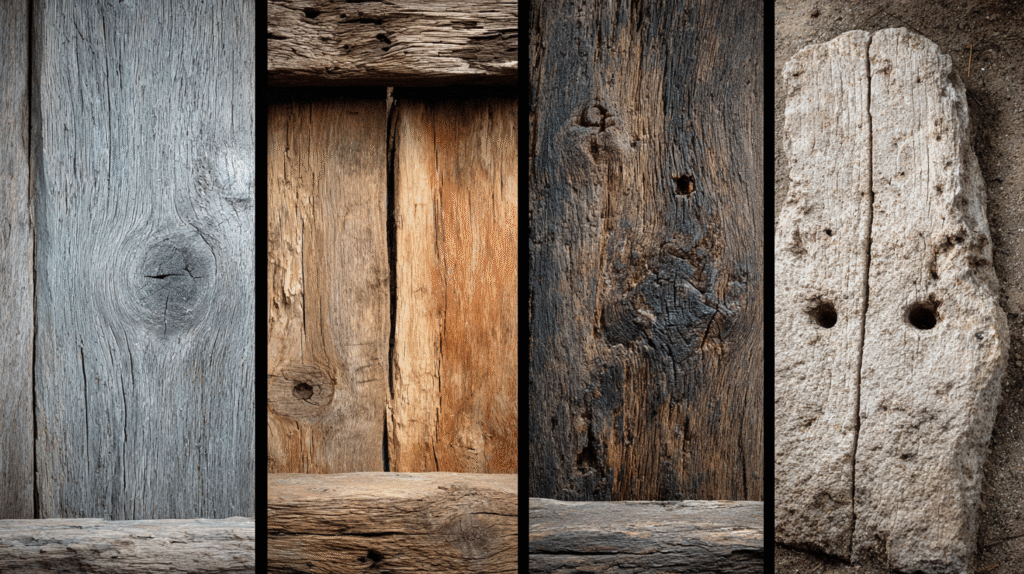
Beyond Native: Innovative Timber Solutions for Queensland Conditions
In addition to naturally durable native species, innovative timber treatments and products offer enhanced performance for demanding environments. One such example is Thermory Timber, which is thermally modified wood. This process uses high heat and steam to enhance the timber’s durability, stability, and resistance to moisture and pests, all without the use of chemicals. Thermally modified timber is reported to adapt well to varied Australian conditions, including Queensland’s humid summers, making it suitable for applications like decking and cladding. While the primary reference for Thermory is a Melbourne-based supplier, the technology itself and similar thermally modified products may be available through Queensland suppliers or distributors, offering another avenue for climate-resilient timber solutions.
It’s worth noting that while some timbers are naturally resistant, others might require or benefit from protective treatments, especially if used in exposed conditions. For instance, Mackay Truss & Timber advises that all pine used in their area should be treated. When considering reclaimed timber, it’s prudent to inquire about any past treatments the wood may have undergone, as some older preservatives could be hazardous (e.g., creosote in old railway sleepers). For new applications or if existing protection is uncertain, modern, eco-friendly preservatives and finishes can provide effective protection without compromising environmental safety or indoor air quality.
To aid in selecting the most suitable reclaimed timber for Queensland’s climate, the following table summarizes key characteristics:
Climate Champions: Top Reclaimed Timbers for Queensland Conditions
| Timber Species | Key QLD Benefits | Common Reclaimed Uses | Notes |
| Cypress Pine (Native) | Termite Resistance | Flooring, Cladding, Framing | Naturally resistant, distinct aroma. |
| Ironbark (Red/Grey) | Termite Resistance, High Durability (Class 1) | Decking, Flooring, Structural, Posts & Beams | Extremely tough and long-lasting. |
| Blackbutt | High Durability (Class 1/2), Fire Resistance (some BAL) | Decking, Flooring, Cladding | Popular, reliable Australian hardwood. |
| Spotted Gum | High Durability, Fire Resistance (some BAL) | Decking, Flooring, Cladding, Feature Beams | Adaptable, attractive grain. |
| Turpentine | Termite Resistance, High Durability (Class 1 in ground) | Wharf Timbers, Decking, Flooring | Very durable, especially in contact with ground/water. |
| Tallowwood | High Durability (Class 1) | Flooring, Decking, Cladding | Rich colour, good for internal and external use. |
| Merbau (Kwila) | Moisture & Insect Resistance, Durability | Decking, Outdoor Furniture | Good for humid areas; ensure reclaimed source. |
| Johnstone River Hardwood | Very Hard, Indentation Resistant | Flooring, Parquetry | FNQ native, beautiful but rare. |
| Thermally Modified Timber | Enhanced Stability & Durability, Moisture Resistance | Decking, Cladding | Chemical-free treatment, good for varied climates. |
From Salvage to Stunning: A Buyer’s Guide to Reclaimed Timber
Embarking on the journey of sourcing reclaimed timber can be incredibly rewarding, but it requires a discerning eye and a bit of knowledge. Understanding what to look for, the terminology used, and the factors influencing cost will empower buyers to make confident choices and find pieces that are not only beautiful but also sound and suitable for their intended purpose.
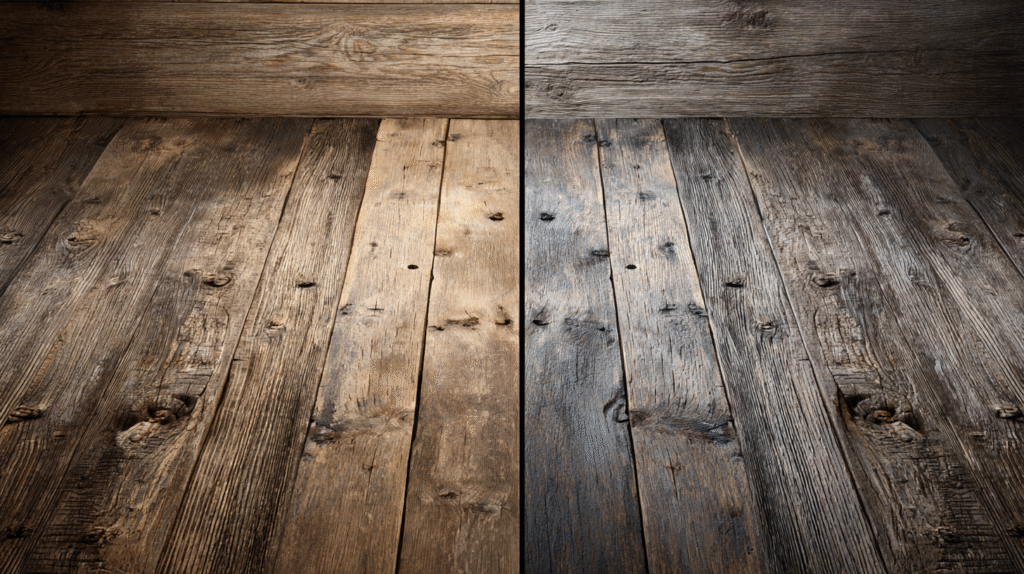
What to Look For: Inspecting for Quality and Potential Issues
When inspecting potential reclaimed timber purchases, several key aspects need attention to avoid future problems:
- Rot: Carefully examine the wood for any signs of rot or decay. Soft spots or a punky texture can indicate compromised integrity. It’s advisable to poke suspect areas with a screwdriver or a similar tool to gauge the depth of any rot. If the decay is extensive or deep, it’s generally best to pass on that piece.
- Insect Damage: Look for evidence of past or present insect infestation, such as small holes, tunnels (galleries), or the presence of actual insects or frass (insect droppings). Reputable reclaimed timber dealers often kiln-dry their products, a process that effectively kills any insects and their larvae. If sourcing wood directly from a demolition site or a less formal supplier, and insect activity is suspected, the wood may need to be kiln-dried or treated with an appropriate insecticide (like a borate-based product) before being brought into a home.
- Lead Paint: Timber salvaged from older structures, particularly if painted, may carry layers of lead-based paint. Lead is a hazardous substance, and its presence requires careful handling. If lead paint is suspected, it must be removed safely, typically involving specialized techniques, personal protective equipment (PPE) like respirators, and meticulous control of dust and debris.
- Nails, Screws, and Other Metal: Reclaimed wood frequently contains embedded metal objects like nails, screws, bolts, or staples, often hidden beneath the surface or with broken-off heads. These can pose a significant hazard to woodworking tools (damaging saw blades or planer knives) and can also be a safety risk. It’s essential to use a metal detector or a strong magnet to locate and remove these fasteners before any cutting or machining. Some specialized suppliers, like Kennedys Timbers, incorporate metal extraction into their reclaiming process.
- Old Preservatives: Certain types of reclaimed timber, such as old railway ties (sleepers), fence posts, or some barn timbers, may have been treated with industrial-strength preservatives in the past. These can include substances like creosote or arsenic-based compounds, which are not safe for indoor use or for applications where frequent human contact is expected (e.g., children’s play equipment, vegetable garden beds). Such timbers should generally be reserved for specific outdoor, non-contact uses, or avoided altogether depending on the project.
While sourcing timber directly from demolition sites can be economical, it places a greater onus on the buyer to perform these thorough checks. Opting for a reputable supplier often means that much of this preparatory work, such as de-nailing, cleaning, and quality assessment, has already been done, justifying a potentially higher price but offering greater peace of mind and convenience.
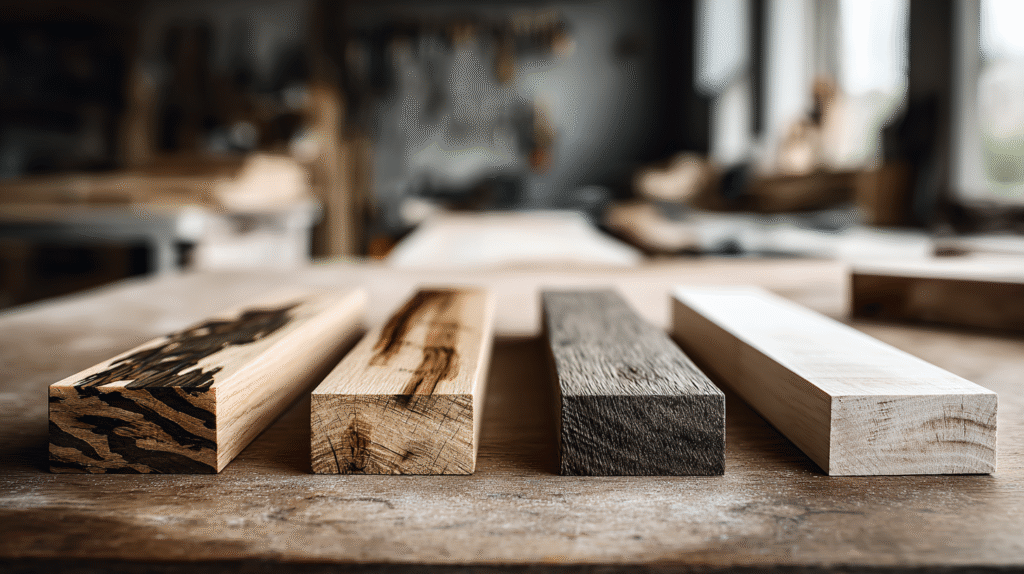
Understanding the Lingo: Grades, Species, and Provenance
The world of reclaimed timber has its own nuances. The species of the wood and its original use can significantly affect its quality and characteristics. For instance, timber from old-growth trees tends to be denser and more resilient than wood from younger, faster-growing trees typically used in modern lumber production.
It is always advisable to ask questions about the timber’s history. Inquiring about its provenance (where it came from), its approximate age, and any known treatments or finishes can provide valuable context. Reputable dealers are often knowledgeable about their stock and can share the “story” behind the wood, adding to its appeal and helping to verify its authenticity.
Cost Considerations: What Influences the Price Tag?
Generally, reclaimed wood tends to be more expensive than new, commodity lumber. This price difference reflects the labor-intensive processes involved in sourcing, deconstructing old structures, transporting the salvaged materials, de-nailing, cleaning, drying, and preparing the wood for reuse.
Several factors influence the final price:
- Species: Rare or highly sought-after wood species will naturally command higher prices.
- Quality and Condition: Timber that is in excellent condition, with minimal defects and desirable characteristics (like wide planks or long lengths), will be more valuable.
- Size and Dimensions: Larger beams, wider planks, or unusual dimensions can increase the cost.
- Amount of Processing: Timber sold “as-is” from a demolition site will be cheaper than wood that has been de-nailed, kiln-dried, planed, or milled into a finished product like flooring.
- Availability and Rarity: Limited supply of a particular type or source of reclaimed wood can drive up its price.
- Market Demand: Like any commodity, prices can fluctuate based on current trends and demand.
As an indicative example, reclaimed timber flooring might cost significantly more per square foot than conventional new flooring options. While the initial investment for reclaimed timber may be higher, many find that its unique aesthetic appeal, superior physical properties in many cases, and significant environmental benefits justify the cost. Safety is also a critical aspect of sustainability; ensuring that reclaimed wood is free from hazardous materials like lead paint or unsafe old preservatives is a non-negotiable part of responsible sourcing and use.
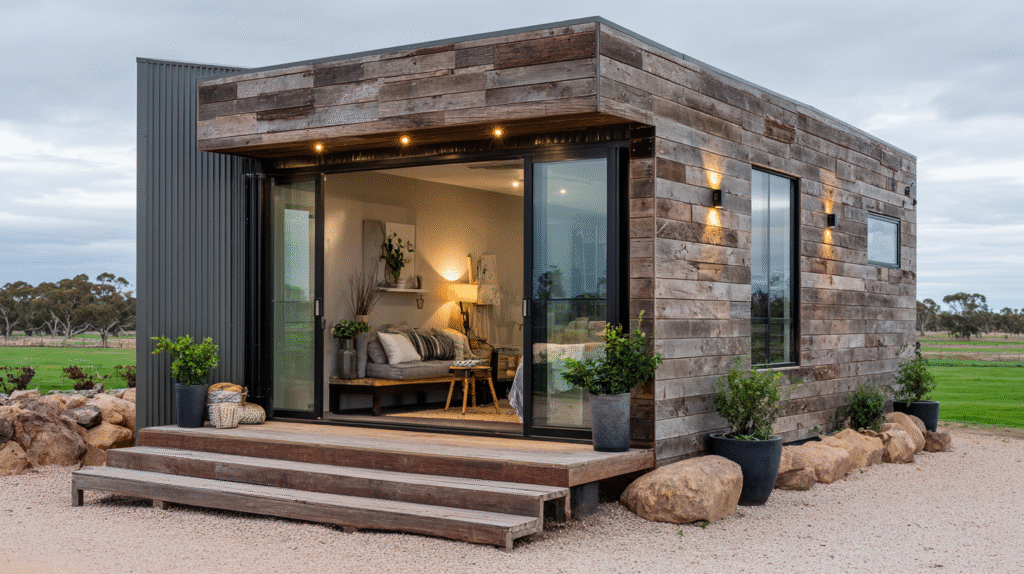
More Than Just Material: The Eco-Heart of Reclaimed Wood
Choosing reclaimed timber is a decision that resonates deeply with environmental values. It’s a choice that moves beyond aesthetics and durability to embrace a fundamentally more sustainable way of building and designing. The ecological benefits are tangible and significant, contributing to healthier forests, reduced carbon emissions, and less landfill waste.
Reducing Deforestation and Preserving Biodiversity
One of the most direct environmental advantages of using reclaimed timber is the reduced pressure it places on standing forests. By repurposing existing wood, the demand for newly harvested virgin timber decreases. This, in turn, helps to conserve forest resources, protect vital habitats for wildlife, and maintain biodiversity. Every beam salvaged from an old warehouse or plank reclaimed from a dismantled bridge means fewer trees need to be felled, allowing forests to continue their crucial roles in carbon sequestration, water regulation, and supporting complex ecosystems. The act of choosing reclaimed wood directly contributes to “reducing the need for deforestation and requires fewer resources than growing and harvesting trees for new wood”.
Lowering Carbon Footprint: Energy Savings in Re-Processing
The journey of reclaimed timber from its previous life to a new application typically consumes significantly less energy than the entire lifecycle of new wood – from logging and transportation to milling and processing. This reduced energy consumption translates directly into a lower carbon footprint. Life Cycle Assessments (LCAs), which evaluate the environmental impact of a product from cradle to grave (or in this case, cradle to new gate), consistently show favorable outcomes for reclaimed wood. For example, one LCA comparing hardwood flooring options revealed that reclaimed hardwood flooring had considerably lower associated carbon emissions (approximately 175 kg
CO2-equivalent per cubic meter) compared to new hardwood flooring (around 240 kg CO2-e/m³) and vastly lower emissions than if the wood waste ended up in a landfill without methane capture (a scenario producing roughly 1030 kg CO2-e/m³). These figures powerfully illustrate the quantifiable positive impact of choosing reclaimed materials.
Diverting Waste from Landfill
Each year, vast quantities of valuable timber from demolished buildings and structures end up in landfills. Reclaimed timber initiatives actively divert this material from the waste stream, giving it a new purpose and extending its useful life. This not only saves valuable landfill space but also mitigates another environmental concern: the release of methane. When wood decomposes anaerobically (without oxygen) in landfills, it produces methane, a potent greenhouse gas that is approximately 25 times more effective at trapping heat in the atmosphere than carbon dioxide over a 100-year period. By reclaiming and reusing wood, this methane generation is avoided, contributing further to climate change mitigation.
The decision to incorporate reclaimed timber into a home or project is, therefore, an active participation in a more sustainable future. It’s a choice that reflects an understanding of resource limits and a commitment to reducing environmental impact. Moreover, the increasing consumer demand for such materials sends a powerful market signal, encouraging the growth of the reclamation industry, fostering innovation in reuse techniques, and promoting broader adoption of sustainable practices within the construction and design sectors. Each individual choice collectively contributes to a significant positive shift.
Designing with History: Styling Your Queensland Space with Reclaimed Timber
Reclaimed timber offers a remarkable palette for designers and homeowners, bringing warmth, texture, and a unique narrative to any space. Its versatility allows it to shine in a multitude of applications, from grand structural elements to subtle decorative details, effortlessly complementing various Queensland design aesthetics.
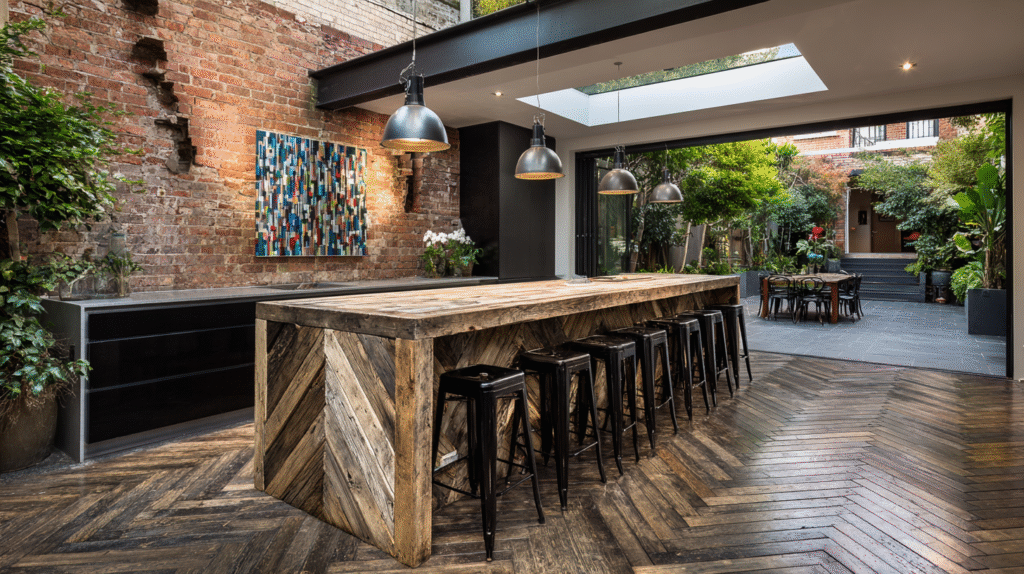
Popular Uses: From Statement Floors to Feature Walls
The adaptability of reclaimed timber means it can be incorporated into almost any aspect of a home’s design:
- Flooring: Perhaps one of the most popular uses, reclaimed timber flooring brings unparalleled warmth, character, and a tangible sense of history underfoot. Companies like Ocean Floors Gold Coast specialize in crafting stunning recycled timber floors.
- Doors: Crafted into sturdy and attention-grabbing entry or internal doors, reclaimed wood can create an inviting and memorable first impression.
- Wall Panelling & Cladding: Used as feature walls or extensive cladding, reclaimed timber adds depth, texture, and significant visual interest to interior and exterior surfaces. Kennedy’s Timbers is one supplier offering reclaimed cladding options.
- Beams and Posts: Exposed reclaimed beams and posts can serve as powerful structural and aesthetic statements, defining spaces and highlighting architectural features. Kennedy’s also provides feature posts and beams.
- Furniture: From rustic farmhouse tables and coffee tables to elegant mantels and unique headboards, reclaimed wood lends itself beautifully to furniture creation. Businesses like Brisbane Furniture (with their recycled timber “Plantation” range ) and artisan workshops like Bomitali Woodcraft specialize in such pieces.
- Decking: Essential for Queensland’s outdoor lifestyle, reclaimed timber decking offers a durable and character-filled foundation for alfresco living. Many timber suppliers, including Kennedy’s, offer reclaimed decking materials.
- Kitchen Benchtops and Joinery: The durability and unique grain patterns of certain reclaimed timbers make them ideal for hardworking surfaces like kitchen benchtops or for custom joinery.
- Landscaping: Beyond the house itself, reclaimed timber, such as old railway sleepers or weathered posts, can be used to create stunning garden features, retaining walls, planters, and pathways. Suppliers like Blue River Landscape Supplies cater to these needs.
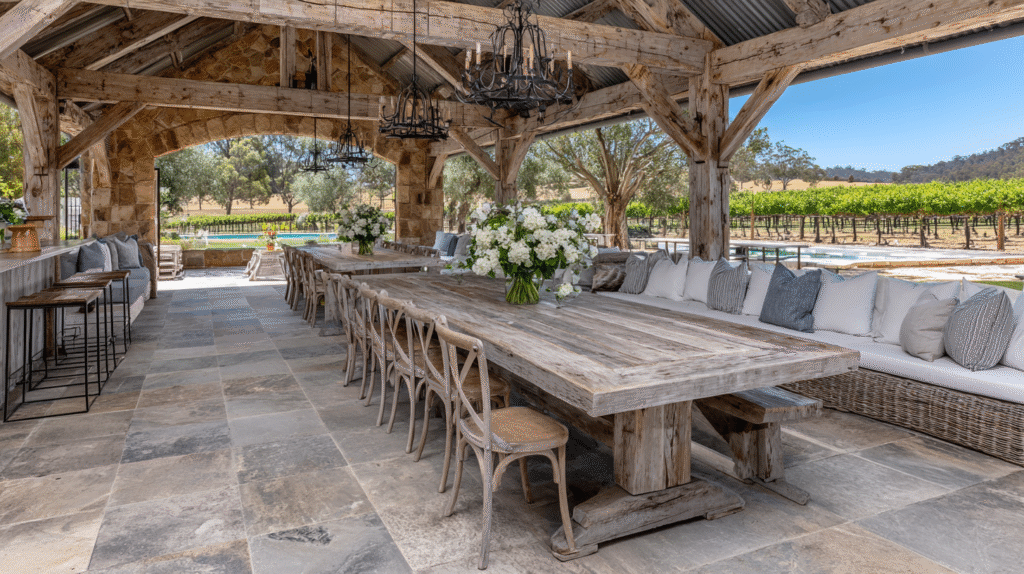
Queensland Design Styles: Coastal, Tropical, Rustic, Contemporary
While often associated with rustic charm 1, reclaimed timber’s versatility allows it to enhance a wide spectrum of design styles prevalent in Queensland:
- Coastal/Hamptons: Lighter-toned reclaimed woods, or those painted or whitewashed, can contribute to the bright, airy, and relaxed feel of coastal and Hamptons-inspired interiors. Think weathered greys or pale, sun-bleached hues.
- Tropical: Richer, darker reclaimed timbers with prominent grain patterns can evoke the lushness and warmth of tropical design, creating a connection with Queensland’s natural environment.
- Modern Rustic: This popular style perfectly balances old and new. Reclaimed timber provides the essential rustic warmth and texture, which can then be juxtaposed with clean lines, modern fixtures, and a neutral palette for a sophisticated yet comfortable feel.
- Industrial: The raw, unrefined character of some reclaimed timbers, particularly large beams, weathered planks, or pieces with visible metalwork, is a natural fit for industrial-style spaces, celebrating the material’s history and structural honesty.
- Contemporary: Even in sleek, contemporary designs, reclaimed timber can be used to add a touch of warmth, an unexpected texture, or a focal point with a unique story.1 A polished reclaimed timber accent wall or a custom-designed piece of furniture can prevent a modern space from feeling too sterile.
The key is in the selection of the timber—its species, color, texture, and finish—and how it’s integrated with other materials and design elements in the space. This adaptability counters any misconception that reclaimed wood is limited to a single aesthetic, opening up possibilities for a wide range of Queensland homeowners.
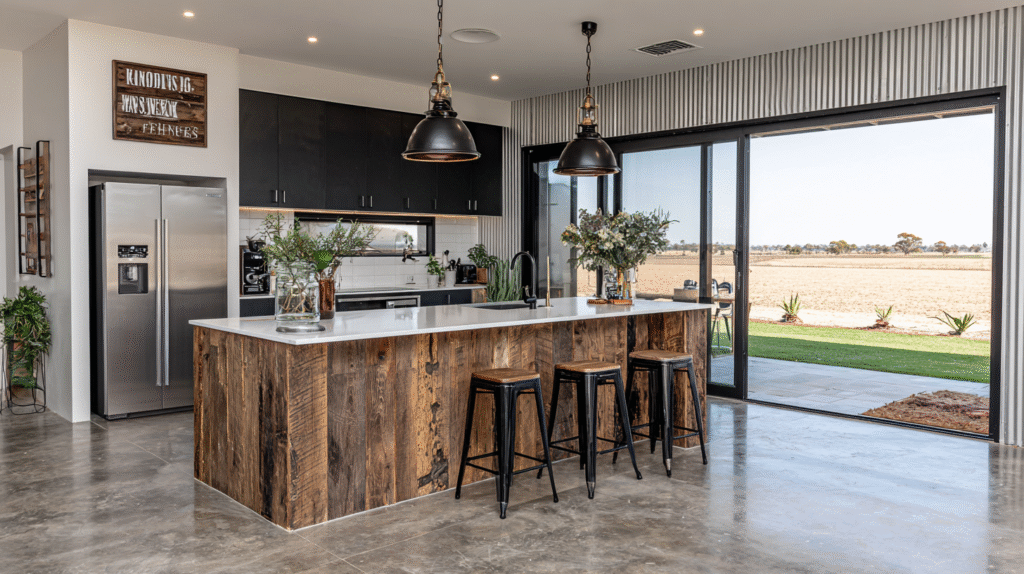
DIY Project Ideas for the Hands-On Homeowner
The growing interest in DIY and home renovation projects has also fueled the demand for reclaimed wood.2 For those who enjoy a hands-on approach, reclaimed timber offers endless possibilities for smaller, achievable projects that can add a personal touch and unique character to a home:
- Shelving: Simple plank shelves made from reclaimed wood can add rustic charm to any room.
- Picture Frames: Unique and characterful frames can be crafted from smaller offcuts.
- Small Tabletops or Stool Tops: A single interesting plank can become a feature coffee tabletop or the seat for a rustic stool.
- Garden Planters or Herb Boxes: Weather-resistant reclaimed timbers can be fashioned into attractive and durable outdoor planters.
- Serving Trays or Chopping Boards (food-safe finishes required): Smaller, high-quality pieces can be transformed into beautiful and functional kitchen items.
These projects not only provide an outlet for creativity but also allow homeowners to engage directly with the material, appreciating its history and unique qualities firsthand. Given Queensland’s climate and emphasis on indoor-outdoor living, reclaimed timber can also be instrumental in beautifully bridging these zones, for example, by using complementary timbers for internal flooring and external decking, or by crafting outdoor furniture that echoes interior design elements.
Smart Searching: GEO Tips for Finding Your Perfect Reclaimed Timber
In today’s digital age, finding specific products and services often begins with an online search. Understanding a little about how search engines, especially newer AI-driven ones, work can help homeowners more effectively locate the reclaimed timber and suppliers they need. This knowledge empowers users to become more savvy searchers, not just for timber but for all their sustainable home needs.
Leveraging Online Marketplaces and Local Directories (Beyond this one!)
While comprehensive guides like this article aim to provide a strong starting point, the search can extend to other online platforms. Online marketplaces such as Facebook Marketplace, eBay, and Craigslist can sometimes yield reclaimed wood products or connect buyers with smaller, local sellers.1 However, when using these platforms, it’s crucial to exercise caution and apply the inspection principles outlined earlier, as quality and authenticity can vary widely.
Beyond commercial platforms, exploring local council websites for information on recycling initiatives or waste transfer stations that might salvage timber can be fruitful. Community groups, online forums dedicated to renovation or sustainable living, and local building associations may also provide leads or recommendations for sourcing reclaimed materials.
Your Sustainable Story: Embracing Reclaimed Timber in Queensland
The journey with reclaimed timber is more than just a construction or design project; it’s an opportunity to weave a unique narrative into the fabric of a home, creating spaces that are not only beautiful and deeply personal but also resonate with a profound respect for history and the environment. Queenslanders have a unique opportunity to blend the state’s rich heritage with contemporary sustainable living by choosing this remarkable material.
Embracing reclaimed timber offers a compelling trifecta of benefits. Aesthetically, it brings unparalleled character, warmth, and individuality that cannot be replicated by new materials. Structurally, many reclaimed timbers, particularly old-growth hardwoods, boast exceptional durability and resilience, perfectly suited to withstand Queensland’s demanding climate. Environmentally, it stands as a champion of sustainability, significantly reducing deforestation, lowering carbon footprints, and diverting valuable resources from landfill.
The path to incorporating reclaimed timber into a Queensland home is an adventure in itself. It encourages exploration of local timber yards, conversations with knowledgeable suppliers, and the thrill of discovering that perfect piece imbued with history. Whether undertaking a large-scale renovation, searching for a statement piece of furniture, or embarking on a small DIY project, the possibilities are as vast as the stories held within the wood itself.
The choice to use reclaimed timber is a conscious step towards a more sustainable lifestyle and a powerful vote for a circular economy. It reflects a desire to create a home that is not only a sanctuary for its inhabitants but also a gentle steward of the planet’s resources. By choosing wood with a past, Queenslanders can build a future where beauty, history, and sustainability are intrinsically intertwined, crafting homes that truly tell a story – their story, and the story of the remarkable timber that gives them life.
Frequently Asked Questions (FAQs) – Reclaimed Timber in Queensland
- What is reclaimed timber? Reclaimed timber is wood that has been salvaged from previous uses, such as old buildings, barns, warehouses, or even ships, and is then repurposed for new projects. It often carries unique characteristics from its past life, like nail holes or aged patinas.
- Why should I choose reclaimed timber for my Queensland home? Reclaimed timber offers several compelling benefits. It provides unique aesthetic appeal with character marks and patinas that tell a story. Often, it’s sourced from old-growth trees, making it denser, stronger, and more durable than new lumber. Environmentally, it’s a sustainable choice as it reduces the demand for virgin timber, conserves forests, lowers carbon emissions associated with new wood processing, and diverts waste from landfills.
- Is reclaimed timber more expensive than new timber? Generally, reclaimed timber can be more expensive than new, commodity lumber. This is due to the labor-intensive processes of sourcing, deconstruction, de-nailing, cleaning, drying, and preparing the wood for reuse. Factors like species rarity, quality, size, and the amount of processing involved also influence the price. However, many find its unique qualities and environmental benefits justify the cost.
- Where can I find reclaimed timber in Queensland? Queensland has a variety of sources for reclaimed timber. You can find it at specialized reclaimed timber merchants like Kennedy’s Timbers , demolition yards such as Underwood Demolition Market in Brisbane or Townsville Demolitions , salvage yards like Red Ned’s on the Gold Coast , and some building material suppliers who stock recycled options like Tradeware Building Supplies. Some artisans and furniture makers, like Bomitali Woodcraft in Mackay , also work with reclaimed wood. It’s always best to call ahead or visit yards as stock changes frequently.
- What should I look for when buying reclaimed timber? When inspecting reclaimed timber, check for signs of rot or decay by looking for soft spots. Look for insect damage like holes or tunnels; reputable dealers often kiln-dry wood to eliminate pests. If the wood is painted, be aware of potential lead paint, which requires safe removal. Also, carefully check for and remove any embedded metal like nails or screws, as these can damage tools. Inquire about the wood’s provenance and any past treatments, especially for items like old railway sleepers which might have unsafe preservatives.
- Is reclaimed timber suitable for Queensland’s climate? Yes, many types of reclaimed timber are well-suited to Queensland’s climate, which is characterized by humidity, sun, and termites. Hardwoods like Ironbark, Blackbutt, Spotted Gum, and Tallowwood are known for their durability (often Class 1 or 2) and can offer good resistance to weather and, in some cases, termites. Native cypress pines are also naturally termite-resistant. Choosing these species in reclaimed forms combines character with climate resilience.
- What are some popular uses for reclaimed timber in homes? Reclaimed timber is incredibly versatile. Popular uses include flooring, wall panelling or feature walls, exposed beams and posts, doors, furniture (like tables, benchtops, and headboards), decking, and even landscaping features. Its unique character can enhance various design styles, from rustic to contemporary.
- How does using reclaimed timber help the environment? Using reclaimed timber has significant environmental benefits. It reduces the need to harvest new trees, thus helping to conserve forests and biodiversity. The process of reclaiming and reprocessing wood typically uses less energy and results in lower carbon emissions compared to producing new lumber. It also diverts usable wood from landfills, where it would otherwise decompose and potentially release methane, a potent greenhouse gas.

